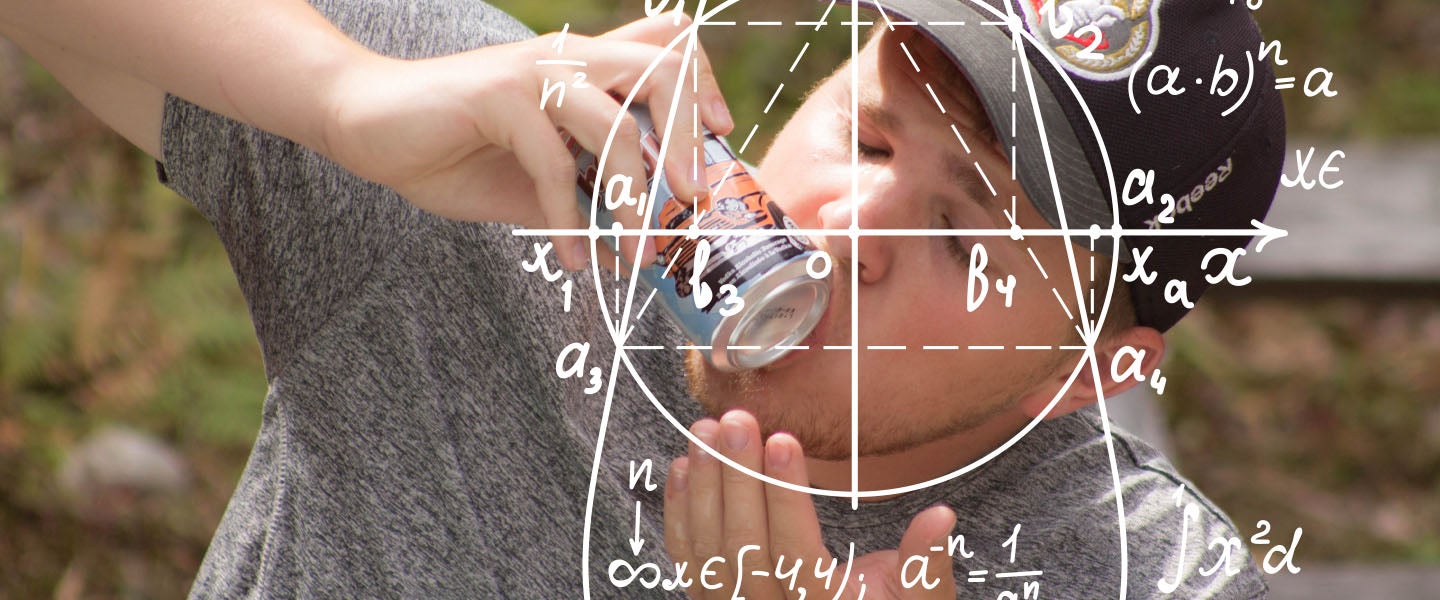In an ideal world, college will open your psyche to many remarkable, diverse specks of knowledge, but the thing that’ll likely stick with you longest is being able to shotgun a beer like the beast frat-daddy you are. A chugging technique particularly common within the walls of fraternity housing (and quite possibly the state of Florida), it essentially allows you to slug an ale within seconds — the world record is an eye-watering 2.78 seconds — something that basic physics would otherwise prevent (more on that later).
The technique itself is simple enough: The beer drinker pokes a hole toward the bottom of their can — using keys, a pocket knife, sometimes their own teeth, whatever — while holding it horizontally to prevent unnecessary spillage. Then they place their lips over said hole, quickly bring the can to a vertical position and pull the tab to open the top. From there, they simply glug as quickly as humanly possible, allowing the golden, bravery-bringing hop sauce to flow freely down their throat and into their expectant belly. Watch closely:
We’ll probably never know who invented the shotgun technique — people have been drinking senselessly before we were even technically people, so it’s impossible to say what archaic versions were out there in ye olden days, possibly involving pottery and spiced mead (sadly, “Sick shotgun, bro” isn’t in the Sanskrit dictionary — I checked).
The technique does, however, appear in several films over the last few decades. While acting as a college freshman in the 1985 teen drama The Sure Thing, John Cusack can be seen shotgunning a morning beer while riding as a backseat passenger. In the 2002 Canadian mockumentary FUBAR, the two protagonists Terry and Dean (or Deaner) spend pretty much the whole movie shotgunning random beers. And Entourage, the bro-iest of bro shows, of course features a shotgunning scene.
Shotgunning eventually became such a popular method of beer drinking that, in 2012, the massive Miller Brewing Company released a now-bygone (RIP) series of cans featuring a punch top, which allowed drinkers to easily poke a hole in them. These pseudo-shotgunning cans really worked, too:
So let’s talk about how shotgunning actually works. “Liquids drain faster if there’s a hole in the bottom, because it allows air to seep into the bottom,” explains physicist Michio Kaku. “In other words, a liquid only drains if there’s air to replace the liquid — without a way to introduce air, the liquid remains inside the bottle [or can] even when upside down.” In simpler terms, when your mouth is covering the only entrance to the beer can, a vacuum is created that essentially slows the flow of liquid. But when you add another hole in the bottom of said can, air can enter freely to help push the beer down your gullet.
Fluid mechanics researcher Howard Stone, despite admitting that he has never shotgunned a beer in his life, takes this another step further, adding that pressure is also at play. “From your description, it sounds like the can has two openings — one at each end — which equilibrates the [atmospheric pressure] and allows the beer to drain by gravity alone,” he explains. “With only one hole, I presume that the air remaining in the can — neglecting the addition of new air — has a reduced pressure, since it occupies more volume as the liquid is consumed, so the higher atmospheric pressure acts against the gravitational drainage, which slows down consumption.” To explain this even more simply, punching a hole in a beer can allows gravity to shove the beer down your face hole.
Okay, let’s take a break from science to check out this radical dude shotgunning three Four Lokos:
Now, back to more science. The basic assumption when shotgunning a beer is that doing so will get you drunk quicker than drinking it like a normal person would. This is true: The body absorbs alcohol much quicker than the liver metabolizes it, and unlike many foods, alcohol requires very little in terms of digestion, which is why we generally start feeling drunk pretty quickly after having a drink or two. All of which means, when we drink faster than our liver can metabolize those drinks — on average, one drink takes about an hour to metabolize — alcohol levels in the body begin to increase, which is why we get drunk. Furthermore, the more you drink — and more importantly in this case, the faster you drink — the more those levels continue to increase, since again, the liver can only metabolize that booze at a rate of about one drink per hour.
There are several factors that might affect how quickly your body absorbs alcohol — your size, your tolerance and whether you ate anything beforehand — so it can be tough to say exactly how shotgunning might affect you in particular. But since one beer has roughly the same alcohol content as a single hard liquor shot, shotgunning should have a similar effect to throwing back a tequila.
Which brings me to my final lesson for today: Shotgun at your own risk.

